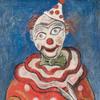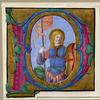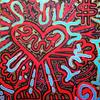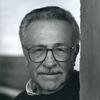MFA Boston Reframes the American Experience in 'Fabric of a Nation: American Quilt Stories'
- October 17, 2021 17:20
Quilts are a democratic art. They provide a window into the lives of the many people who have made and used textiles, across geographic, political, social and economic contexts. At the Museum of Fine Arts, Boston (MFA), from October 10, 2021 through January 17, 2022, Fabric of a Nation: American Quilt Stories showcases 50 remarkable works created by women and men, known individuals and those yet to be identified, urban and rural makers, and members of the Black, Latinx, Indigenous, Asian and LGBTQIA+ communities. The exhibition explores how the quilt, which is often seen today as a timeless, quintessentially “American” art form, has in fact continuously evolved, shaped by a broadly underrecognized diversity of artistic hands and minds. Dating from the 17th century to the present day, the masterpieces on view reveal a rich—and richly complicated—story of the nation’s shared history, contributing to the evolving conversation about what defines the American experience.
“Fabric of a Nation represents the MFA’s ongoing commitment to widen our perspectives and to reconsider longstanding notions of what constitutes American art and the American experience,” said Matthew Teitelbaum, Ann and Graham Gund Director. “With this exhibition, we invite our visitors to consider not only the objects themselves, but also the stories of their makers and the narratives—often left untold for too long—that they wish for us to remember.”
The exhibition brings together for the very first time the only two extant quilts made by Harriet Powers (1837–1910), a formerly enslaved woman from Athens, Georgia. The MFA’s iconic Pictorial quilt (1895–98) is displayed alongside the Bible quilt (1885–86), on loan from the Smithsonian’s National Museum of American History—a historic union that sheds new light on Powers’ extraordinary artistic and storytelling talents. Fabric of a Nation also features several new MFA acquisitions by contemporary artists who are both building on the centuries-old tradition of quilt making and using the medium to investigate alternative narratives, aesthetics and politics. These works, on view at the Museum for the first time and interspersed among the historical works in the exhibition, include pieces by Sanford Biggers (born 1970), Bisa Butler (born 1973), Carla Hemlock (Kanienkeháka [Mohawk], born 1961), Sylvia Hernandez (born 1961), Carolyn Mazloomi (born 1948), Tomie Nagano (born 1950), Rowland Ricketts (born 1971), Gio Swaby (born 1991) and Michael C. Thorpe (born 1993).
“Universally appealing, quilts have become a truly democratic art,” said Jennifer Swope, David and Robert Logie Associate Curator of Textile and Fashion Arts. “With a collection of more than 300 masterworks that range from the 17th century to today, the MFA is uniquely positioned to undertake an exhibition that explores the artistry of quilts. It has been exciting to make new acquisitions and to connect the work of living artists to our historic treasures, offering a new take on a familiar medium and a familiar history.”
The exhibition is organized thematically into seven sections. The introductory section titled “Who/What Is America?” invites visitors to explore these open-ended questions through five quilts that span 150 years. Among these are the Vote quilt (1975) made in Gee’s Bend, Alabama by Irene Williams (1920–2015), which is shown alongside two other works that evoke the U.S. flag, and To God and Truth (2019), the largest and most ambitious work to date by contemporary quilter Bisa Butler (born 1973).
Set within the context of the global textile trade between the American colonies and the expanding empires of Spain and Great Britain, the quilts on view in the second section, “Unseen Hands,” honor the contributions of the individuals—many of them enslaved—who contributed to the creation of the works themselves or the cultivation of the materials used to make them. In addition to quilts that were treasured by prosperous white Americans in the 18th century, this section features contemporary pieces by Tomie Nagano (born 1950) and Rowland Ricketts (born 1971), which explore the history of indigo production.
The works on view in section titled “Crafting a Nation” fall into a period of growth, when, following the Revolutionary War (1775–1783), the U.S. expanded its territory from the Atlantic Ocean to the Pacific. During this time, emerging urban centers like Baltimore offered new roles for women, who used their domestic skills to supplement household incomes by designing and stitching quilt blocks or weaving. This period of increasing prosperity in the new country, however, also came at the expense of the enslaved African Americans who worked plantation fields as the demand for cotton grew and the Native Americans and Hispanic settlers who were displaced by westward expansion.
The fourth section, “Conflict Without Resolution,” features seven pieces that explore the Civil War (1861–1865) and the legacy of slavery in the U.S.—from the Jim Crow era to the civil rights movement to the recent protests for Black Lives Matter. Large-scale works on view include a Civil War Zouave quilt (probably mid- to late 1860s) made in part from Union troops’ uniform cloth, which illustrates General Ulysses S. Grant leading a charge on the Confederate city of Vicksburg, Mississippi, and Dream 2: King & The Sisterhood by Faith Ringgold (born 1930), which portrays Dr. Martin Luther King Jr. surrounded by Coretta Scott King, Fannie Lou Hamer, Rosa Parks and Ella Baker. The most recent works, made in 2020 by Carolyn Mazloomi (born 1948) and Michael C. Thorpe (born 1993), evoke ongoing calls for racial justice.
The section titled “Quilts as Art” celebrates the evolution of quilts into a celebrated national art form, highlighting the achievements of Harriet Powers (1837–1910) and other quilters whose names have been lost in creating extraordinary quilts—not for the home, but for the walls of county, state and even international fairs.
America saw tremendous changes in the early 20th century, and yet quilts and coverlets continued to hold their place in people’s hearts and homes. The sixth section, “Modern Myths,” features dazzling examples of what have come to symbolize American virtue and resourcefulness from the Great Depression (1929–1933) through the early period following World War II (1939–1945). These include quilts from Gee’s Bend, Alabama, where African American women such as Rachel Carey George (1908–2011) and Creola Bennett Pettway (1927–2015) created powerfully imaginative bedcovers that transcended utility, and a quilt on loan from the National Japanese American Historical Society in San Francisco that was made by Japanese American fourth graders at an internment camp in Poston, Arizona.
Works on view in “Making a Difference” explore how the medium has been continually rediscovered by new generations who have used it for artistic expression, social protest or remembrance. The section begins in the 1970s with quilts by young artists who challenged hierarchies within the art world, including childhood friends Susan Hoffman (born 1953) and Molly Upton (1953–1977), who shared a studio in Cambridge, Mass. The exhibition concludes with the work of contemporary artists—including Sylvia Hernandez (born 1961), Gio Swaby (born 1991) and Carla Hemlock (Kanienkeháka [Mohawk], born 1961)—who are using quilt making to address a myriad of issues such as gun violence, the legacy of violence and trauma enacted on Black bodies, the resilience of Black Joy, and Indigenous sovereignty.
The theme of making a difference continues into a visitor engagement space outside of the exhibition galleries, which highlights the work of contemporary quilters and guilds who are creating an impact within their own communities. Here, visitors can also browse an interactive database of the more than 48,000 panels that make up the NAMES Project AIDS Memorial Quilt, which memorializes more than 125,000 people who have died from AIDS-related complications.













31100x100_c.jpg)






